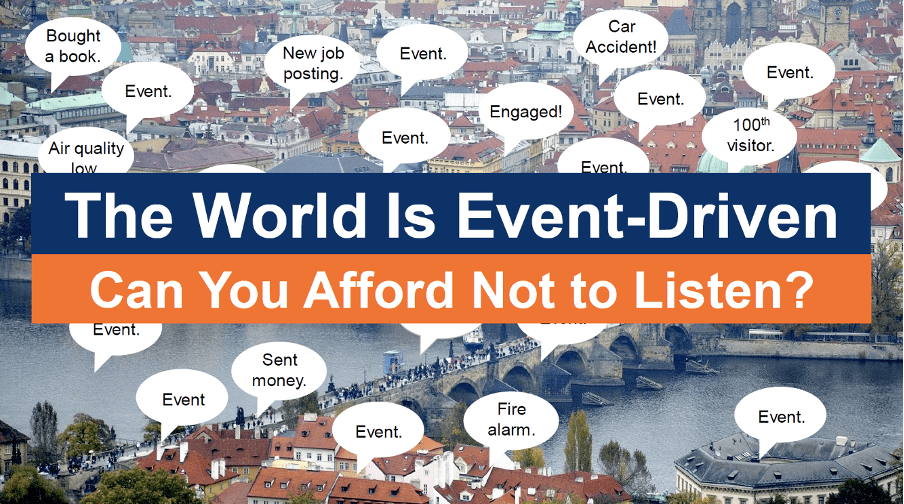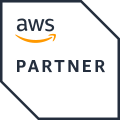Gartner on Event-Driven Architecture
July 27, 2023 | Andrey Nikishin
In May 2023, the Gartner Application Innovation & Business Solutions Summit took place in Las Vegas, featuring several presentations centered around event-driven architecture and its application in various use cases. Among the speakers was Yefim Natis, Gartner’s Distinguished VP Analyst, who delivered a captivating talk that not only delved into the architecture itself but also explored the intriguing concepts of event-driven approach and event-driven thinking, which I found particularly captivating.

Figure 1 – Source: Gartner presentation “Introduction to Event Native Thinking and Building”, 22-24 May 2023, by Yefim Natis
I am not going to retell all of the connect of the presentation, instead, I want to stress the most important part of it. Let me start with the 4 technologies that according to Yefim are used together for a complete event processing system (see Figure 2 below):
- Event broker
- Event portal
- Event store
- Stream Analytics

Figure 2 – Source: Gartner presentation “Introduction to Event Native Thinking and Building”, 22-24 May 2023, by Yefim Natis
The event broker lies at the core of this platform, and the analyst described the fundamental as well as the advanced features typically present in standard event brokers, illustrated in the image below. Having dedicated ourselves to crafting an event broker for an extended period, the team at Diffusion takes great pride in surpassing Gartner’s definition of advanced capabilities. A prime example is our data compression functionality, which significantly minimizes the data transmitted and received through event brokers. Additionally, our highly advanced data wrangling and manipulation capabilities empower our customers to generate highly personalized data streams for each individual user.
Yefim observed that while certain vendors might offer all these components, companies frequently opt to develop their own platform using the finest available tools for each specific aspect.
I believe that the presentation underscores a crucial takeaway: the basic functional set, as depicted in picture 3, is remarkably vast and intricate. Therefore, developers should exercise caution and carefully consider the implications before embarking on building a homemade event broker or an entire event-driven solution. It’s important to note that an advanced set of functions has not even been mentioned yet, further reinforcing the complexity of such an undertaking.

Figure 3 – Source: Gartner presentation “Introduction to Event Native Thinking and Building”, 22-24 May 2023, by Yefim Natis
Gartner’s reputation is built on presenting trends and predictions, and once more, during the Apps Summit, Sr. Director Analyst Andrew Humphreys conducted a session titled “Trends and Use Cases for Event-Driven Architecture.” The analyst began by highlighting that event-driven architecture currently holds the top position on the hype cycle for application architecture and integration.
According to Andrew’s insights, event-driven architecture predominantly caters to four primary types of use cases, along with the most commonly employed types of event brokers for each of these cases (refer to Figure 4):
- Enterprise use cases involve the processing of vital business transactions and ensuring dependable data distribution among various application domains. These scenarios are typically handled using queue-orientated event brokers.
- Edge use cases entail reliable data distribution between devices and data centres, often requiring lightweight communication over unreliable networks. These scenarios are generally addressed with a combination of queue and log-based event brokers, depending on the specific requirements.
- Application use cases revolve around reliable data distribution between different application components, which often need to scale independently. Traditionally, queue-based event brokers were employed for such purposes, but increasingly, subscription brokers are being utilized.
- Streaming use cases involve the emission of application and system-generated data describing the state as an event, with other systems subscribing to this data for insights and status updates. Log-orientated event brokers are commonly used to address such scenarios.
Our customers utilize all the aforementioned use cases in both the B2B and B2C sectors. Let me provide you with a specific example.
Meet Ganchrow Scientific, a prominent provider of statistics-driven sports data catering to North and South American markets. They boast a unique position in the eGaming industry as the only company offering intelligent line management integrated with a play-facing front end.
During the development of their products, Ganchrow faced several challenges while striving to achieve their objectives of speed, reliability, and quality:
- Dealing with the notorious unreliability of Latin American ISPs, which posed significant hurdles for real-time, event-driven applications over the Internet due to poor quality-of-service.
- Coping with the efficiency, performance, and scaling demands of their applications.
- The need to simplify and expedite application development, all while contending with a limited pool of top-notch local technical talent in Costa Rica.
Central to Ganchrow’s gaming operations is data management and distribution. Initially, their products relied on polling mechanisms, but this approach proved inadequate for the real-time application requirements. Polling systems were not scalable enough to meet their needs, and they turned out to be costlier and more challenging to maintain and manage data distribution effectively.
To address these issues, the Ganchrow team opted for Diffusion Cloud. After thorough testing, they found the Diffusion platform to be the ideal solution to power their Ganchrow Live and Ganchrow Pre-match offerings. Moreover, it facilitated seamless integration with third-party sports and betting data providers, including Betradar.
The results were impressive, with Ganchrow processing a whopping 5.5 billion messages through Diffusion Cloud in their very first month of production – without encountering any issues or hitches along the way.

Figure 4 – Source: Gartner presentation “Trends and Use Cases for Event-Driven Architecture”, 22-24 May 2023, by Andrew Humphreys
During the presentation, Gartner emphasized the importance for organizations not to shy away from using multiple event broker products. Vendors often specialize in specific main use cases rather than covering all of them. Therefore, it is crucial to carefully select the technology that aligns best with your particular use case and requirements.
The session also shed light on emerging trends and use cases for event-driven architecture, specifically focusing on two areas: microservices communications and delivering data to digital applications while safeguarding back-end systems of record. Gartner introduced the concept of a “Digital Integration Hub” (refer to Figure 5) as a viable approach for the latter use case.
While it’s challenging for me to remain completely impartial, I can’t help but notice the striking resemblance between Gartner’s “Digital Integration Hub” and Diffusion’s Intelligent Data Platform approach, which incorporates the Consume-Transform-Deliver methodology (as depicted in Figure 6).

Figure 5 – Source: Gartner presentation “Trends and Use Cases for Event-Driven Architecture”, 22-24 May 2023, by Andrew Humphreys

Figure 6: Source: www.diffusiondata.com
Gartner has recently outlined the essential elements of an event-driven platform, elucidated the basic and advanced features of event brokers, and provided guidance on when to employ each type of broker. The crucial takeaway from their advice is to align your specific requirements with the capabilities of the event broker and be open to adopting multiple technologies within your enterprise if necessary.
Further reading

BLOG
The Game-Changer: Change Data Capture (CDC)
March 17, 2025
Read More about The Game-Changer: Change Data Capture (CDC)/span>

BLOG
DiffusionData nominated for 2 TradingTech Insight Awards 2025
March 13, 2025
Read More about DiffusionData nominated for 2 TradingTech Insight Awards 2025/span>

BLOG
How to Cut Cloud Costs for Real-Time Data Streaming
July 10, 2025
Read More about How to Cut Cloud Costs for Real-Time Data Streaming/span>







